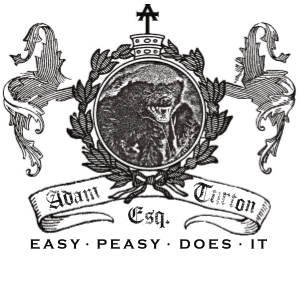Op-Ed Columnist - Bailouts for Bunglers - NYTimes.com [via claudio]
The plans for rescuing the banking system are shaping up as a classic exercise in “lemon socialism”: taxpayers bear the cost if things go wrong, but stockholders and executives get the benefits if things go right.
Intel Demos RF Energy Harvesting Technology : TreeHugger
Photo via harvester/10837/picture/65530/'>Gizmag One of Intel's focuses for eco-technology is increasing our ability to harvest free energy sources from the sun to kinetic energy. This also includes RF energy harvesting from sources like WiFi, cell phone towers and TV
0800376.pdf (application/pdf Object)
Serotonin May Be Key to Controlling Locusts - NYTimes.com
Serotonin has been shown to be responsible for turning desert locusts from stand-offish loners into super-gregarious pests.
'The robots are coming'
Alexander Stoytchev and his three graduate students recently presented one of their robot's long and shiny arms to a visitor. Here, they said, swing it around.
Novel Technology Could Produce Biofuel for Around $0.65 a Liter
(PhysOrg.com) -- A novel technology for synthesising chemicals from plant material could produce liquid fuel for just over €0.50 ($0.65) a liter, say German scientists. But only if the infrastructure is set up in the right way, states the research published in this month’s issue of Biofuels, Bioproducts ...
Sun, sea and sewage in the playground of the rich in Dubai -Times Online
<a href=
BBC NEWS | Middle East | Bush shoe attack spawns artwork
A sculpture of an enormous shoe is erected in Iraq to honour a journalist who threw his footwear at ex-US President George W Bush.
Satoyama: Japan's Amazing Rice Fields and Farms : TreeHugger
(Photo from Ataru's blog Tokai no Inaka) Satoyama is a word that describes the farming landscape near the hills and mountains in Japan, where water is abundant and farmers for a long time have maintained the soil for rice
Film Review: Mad Cow Sacred Cow : TreeHugger
Karma Films Mad Cow Sacred Cow depicts the personal journey of filmmaker Anand Ramayya, a self-professed meat eating Hindu. Ramayya and his crew travel from his in-law's small cattle operation nestled in the heart of the Canadian prairies to
TreeHugger: A Trip to the California Academy of Sciences (Slideshow)
War-Time Advice is Still Relevant : TreeHugger
image from MOBPA The Museum of Brands, Packaging and Advertising is a little museum that displays packaging of brands over the last hundred years. It's interesting because packaging in the old days was very simple and straight forward, with
The Green Belt of World's Longest Desert Highway : TreeHugger
Noburu Ogata China's massive public works projects and geoengineering efforts are unparalleled. Pruned points us to an impressive emblem of both: The Tarim Desert Highway crosses the Taklamakan desert from north to south at a length of 552km, approximately
An Algae Bioreactor from Recycled Water Bottles
In this instructable, we describe how to build a photo-bioreactor that uses algae to convert carbon dioxide and sunlight...
Transfer of Mother’s Cells Molds Baby’s Immunity - NYTimes.com
Researchers have discovered that a mother’s cells slip across the placenta, enter the fetus’s body and teach it to treat these cells as its own.
Company Says It’s Found 1744 Wreck of Famed British Warship - NYTimes.com
Sea explorers say they have discovered the HMS Victory, which sank in 1744 carrying four tons of gold coins.
Experiments Bring Internet to Remote African Villages - NYTimes.com
When Internet connections arrive in small towns like Entasopia, Kenya, they put new tools into the hands of people hungry to use them, and for some there, that has had wide repercussions.
As Home Prices Go, So Do Cities - Floyd Norris Blog - NYTimes.com
A Company Prospers by Saving Poor People’s Lives - NYTimes.com
Vestergaard-Frandsen’s products are used in refugee camps and disaster areas all over the third world and are not only life-saving, but even beautiful.
Of mice and men: Cognitive scientists find both species equally adept at assessing risk
Humans and mice are both good at assessing risk in everyday tasks, according to a study by Rutgers University scientists published this week in the Proceedings of the National Academy of Sciences.
Amazing Chemicals Invented by Nature, Rebuilt in Lab
See the latest multimedia and applications including videos, animations, podcasts, photos, and slideshows on Wired.com
Your Family May Once Have Been A Different Color : NPR
Skin pigmentation in human lineages has changed much faster and more frequently than scientists previously thought, says anthropologist Nina Jablonski. A population can be one color (light or dark), and 100 generations later — with no intermarriage — can be a very different color.

No comments:
Post a Comment